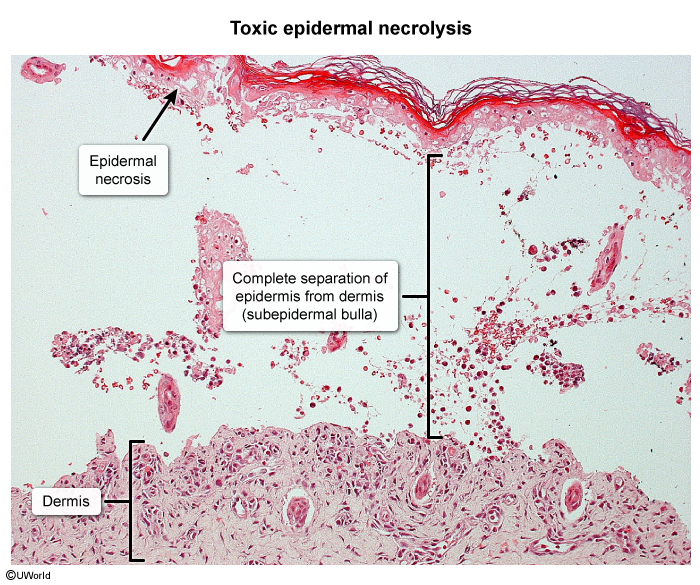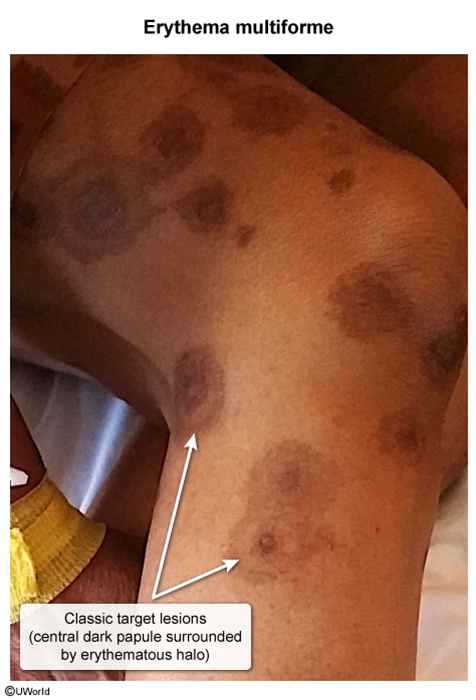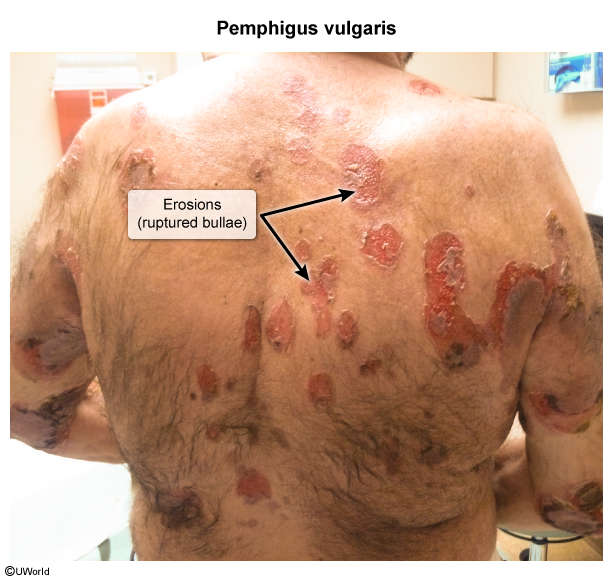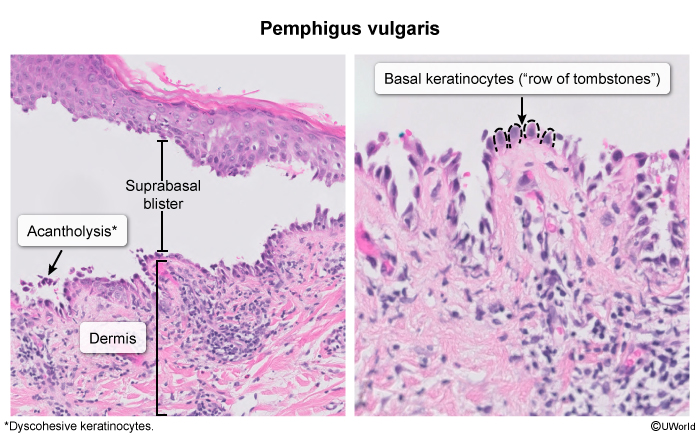Stevens-Johnson Syndrome/Toxic Epidermal Necrolysis
Article Sections
Introduction
Stevens-Johnson syndrome (SJS) and toxic epidermal necrolysis (TEN) are rare but severe mucocutaneous reactions characterized by widespread epidermal necrolysis and sloughing. By convention, SJS denotes <10% involvement of body surface area (BSA), >30% is designated as TEN, and 10%-30% is SJS/TEN overlap. These conditions are considered dermatologic emergencies because they result in high morbidity and mortality rates (~25%).
Etiology and risk factors
SJS/TEN is caused by the following:
- Medications (~80% of cases): A wide range of medications have been implicated; these include antibiotics (eg, sulfa drugs, penicillins, cephalosporins), antiepileptic drugs (eg, phenytoin, carbamazepine), nonsteroidal anti-inflammatory drugs, and allopurinol. Symptoms typically occur within a month of starting the offending medication.
- Infections: Mycoplasma pneumoniae and herpes simplex virus (HSV) are commonly implicated infections.
Continue Learning with UWorld
Get the full Stevens-Johnson Syndrome/Toxic Epidermal Necrolysis article plus rich visuals, real-world cases, and in-depth insights from medical experts, all available through the UWorld Medical Library.
Images

Image 1

Image 2

Image 3

Image 4
Tables
Table 1
Table 2